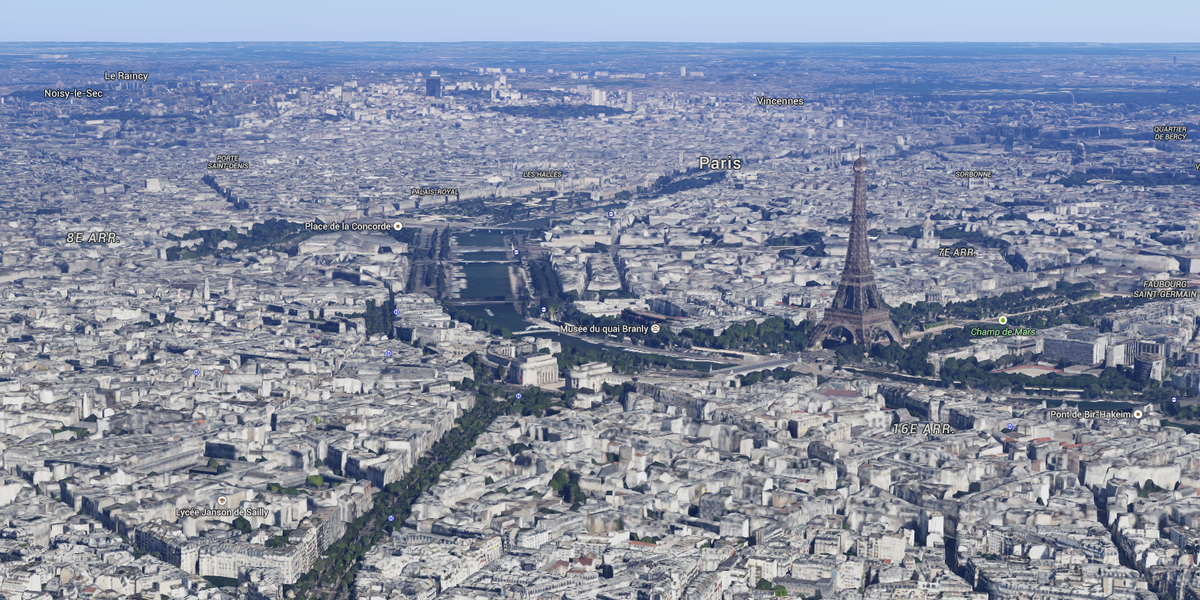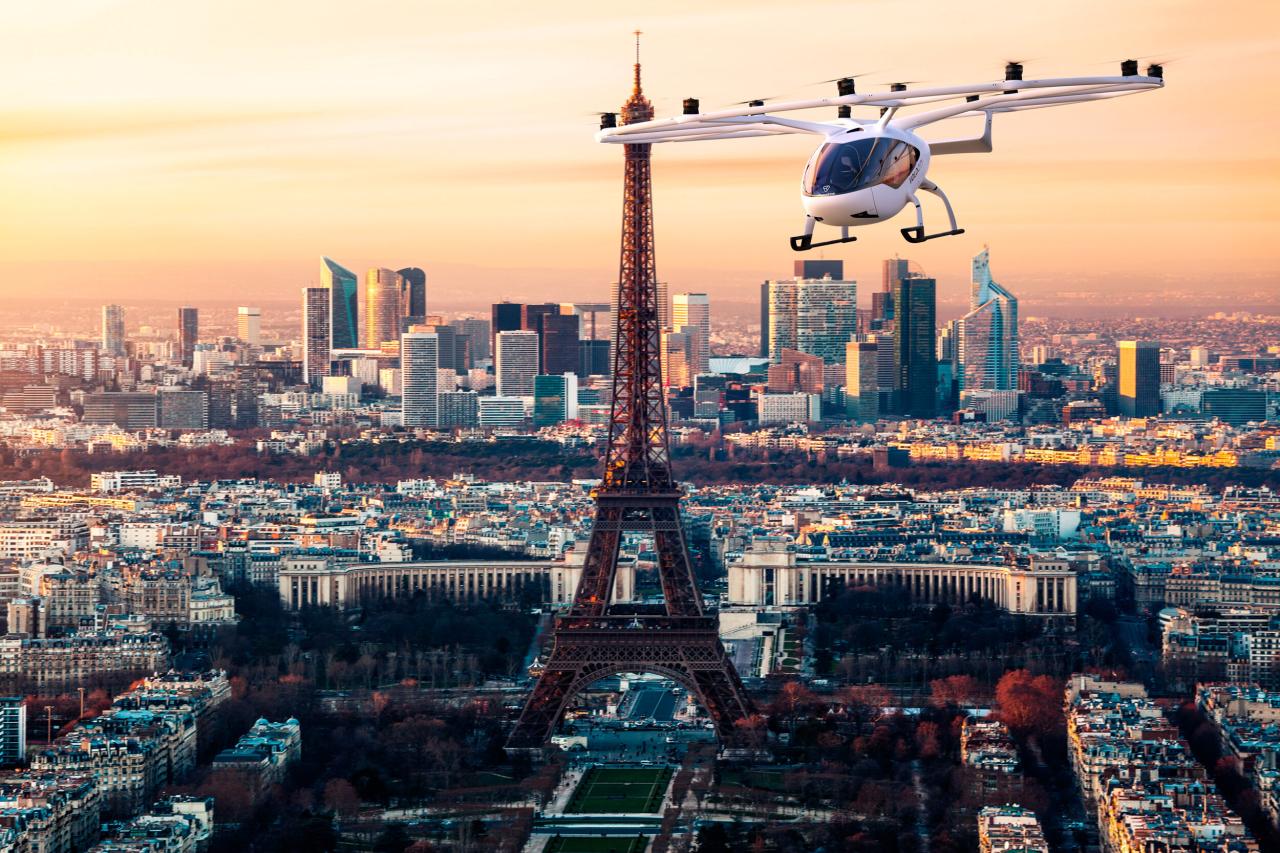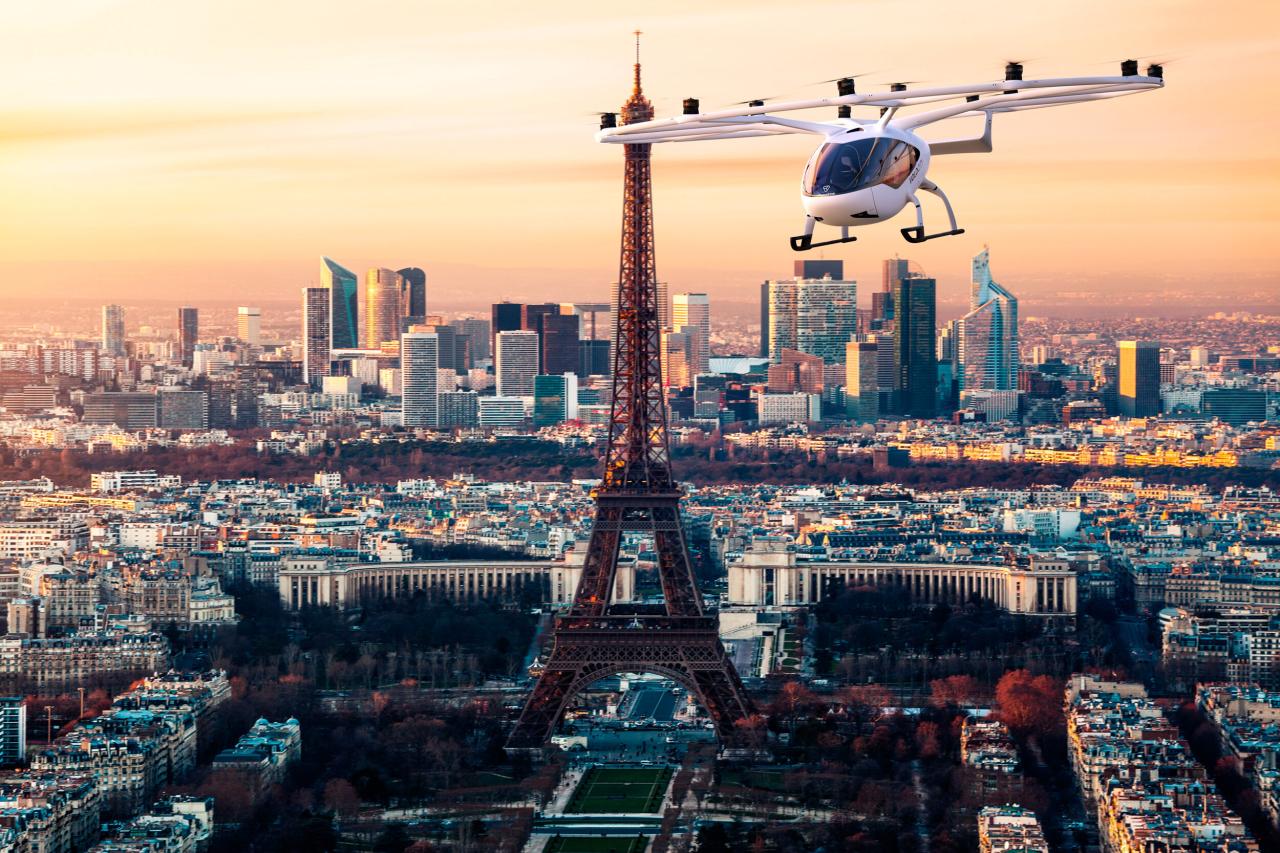Drone in Paris: Imagine soaring above the City of Lights, capturing breathtaking aerial views of the Eiffel Tower, Louvre Museum, and charming Parisian streets. But before you take flight, understanding the rules and regulations is crucial. This guide navigates the legal landscape, explores popular drone activities, and addresses safety concerns, equipping you to experience the magic of Parisian drone photography responsibly.
Flying drones in Paris? Awesome, but you’ll need a strong signal to control it, especially in those crowded areas. Make sure you’ve got a reliable connection by grabbing a solid amplificateur wifi , then you can enjoy those stunning aerial shots of the Eiffel Tower without any connection dropouts. Remember to check local drone regulations before taking off though!
From the intricate legal framework governing drone operation in Paris to the exciting possibilities for creative aerial photography and videography, we’ll cover everything you need to know. We’ll also delve into the economic impact of drones in Paris and their role in public services and infrastructure maintenance. Get ready to discover how drones are shaping the future of this iconic city.
Flying drones in Paris? Awesome! But before you take off, make sure you’ve got a strong, stable Wi-Fi connection for your controller. Knowing your Wi-Fi frequency is key, so check if you’re on 2.4GHz or 5GHz by following these steps: how to check your wifi ghz on iphone. A strong 5GHz signal is generally better for less interference, leading to smoother drone control in the city of lights.
Happy flying!
Drone Regulations in Paris
Navigating the airspace above Paris with a drone requires understanding the specific regulations in place. These rules, while aimed at ensuring safety and security, can differ significantly from those in other European capitals. This section will detail Parisian drone laws, compare them to regulations elsewhere, Artikel penalties for violations, and provide a visual guide to obtaining necessary permits.
Parisian Drone Laws and Regulations
Drone operation in Paris is governed by national French regulations and local ordinances. These regulations often focus on flight restrictions near sensitive areas like airports, monuments, and crowded public spaces. Specific rules include limitations on maximum altitude, operational distance from the pilot, and required pilot certifications depending on the drone’s weight and intended use. No-fly zones are frequently updated, so consulting official sources before each flight is crucial.
Comparison with Other European Capitals

Compared to other major European capitals, Paris’ drone regulations fall within a relatively standard range of strictness. Cities like London and Amsterdam also have extensive no-fly zones and require permits for commercial operations. However, some cities might have more lenient rules for recreational drone use in designated areas. The level of enforcement and the specific penalties for violations, however, can vary considerably.
Penalties for Violating Drone Regulations
Violating drone regulations in Paris can lead to significant penalties, including hefty fines, drone confiscation, and even legal action. The severity of the penalty often depends on the nature and severity of the infraction. For example, flying near airports or unauthorized areas carries a much steeper penalty than minor procedural violations. Staying informed about current regulations and adhering strictly to them is essential to avoid legal consequences.
Flowchart for Obtaining Drone Flight Permits
The process for obtaining permits for drone flights in Paris typically involves online application through official channels, providing detailed flight plans, and demonstrating the pilot’s competency and insurance coverage. The flowchart below Artikels the key steps involved:
- Assess the need for a permit based on flight location, drone weight, and intended purpose.
- Gather required documentation, including drone specifications, pilot qualifications, and insurance information.
- Submit a detailed flight plan outlining the intended flight path, altitude, and duration.
- Receive permit approval or denial from the relevant authorities.
- Upon approval, conduct the flight adhering strictly to the approved plan.
Popular Drone Activities in Paris
Drones have found various applications in Paris, ranging from capturing breathtaking aerial views to assisting in infrastructure inspections. This section will explore common drone uses, showcase successful projects, and analyze the advantages and disadvantages of different applications.
Common Drone Uses in Paris
The most prevalent uses of drones in Paris include photography and videography for tourism and marketing, surveying for construction and urban planning, and increasingly, delivery services for small packages. There’s also growing interest in using drones for security and surveillance purposes, though this is subject to stricter regulations.
Examples of Successful Drone Projects
Several notable projects have showcased the potential of drones in Paris. For instance, drones have been used to create stunning time-lapses of the city, offering unique perspectives on iconic landmarks. They’ve also been employed for inspections of bridges and other critical infrastructure, providing efficient and cost-effective assessments. One example could be a company using drones to inspect the condition of the Seine River bridges, identifying potential structural issues before they become major problems.
Creative Uses of Drones in Paris
Beyond commercial applications, drones have been used creatively in Paris. Artists have incorporated drone footage into their installations, showcasing innovative perspectives on the city’s architecture and landscape. Drone light shows have also become increasingly popular, adding a unique element to public events and celebrations.
Comparison of Drone Activity Benefits and Drawbacks
The following table compares the benefits and drawbacks of using drones for various activities in Paris:
| Activity | Benefits | Drawbacks |
|---|---|---|
| Photography/Videography | Unique perspectives, stunning visuals, accessibility to difficult locations | Regulatory restrictions, airspace limitations, potential for accidents |
| Surveying/Inspection | Cost-effectiveness, efficiency, detailed data collection | Weather dependence, battery limitations, need for skilled operators |
| Delivery | Speed, efficiency, reduced traffic congestion | Regulatory hurdles, safety concerns, limited payload capacity |
Drone Photography and Videography in Paris
Paris offers unparalleled opportunities for stunning aerial photography and videography. However, capturing high-quality footage in a densely populated urban environment presents unique challenges. This section will explore optimal locations, address potential difficulties, and offer practical tips for achieving exceptional results.
Best Locations for Aerial Footage
Iconic landmarks like the Eiffel Tower, the Louvre Museum, and Notre Dame Cathedral provide breathtaking backdrops for drone photography. However, obtaining permits to fly near these locations is often complex. Exploring less crowded areas along the Seine River or in the parks and gardens surrounding the city can yield equally stunning results, with fewer regulatory hurdles.
Challenges of Drone Photography/Videography in Paris

The dense urban environment of Paris presents several challenges for drone operation. Air traffic, restricted airspace, and numerous tall buildings can limit flight options and increase the risk of accidents. Weather conditions can also significantly impact flight safety and image quality. Furthermore, obtaining necessary permissions to fly in certain areas can be time-consuming and complex.
Tips for High-Quality Aerial Shots
- Plan your flight path meticulously, considering airspace restrictions and potential obstacles.
- Use appropriate drone settings for optimal image quality, adjusting ISO, shutter speed, and aperture according to lighting conditions.
- Utilize advanced drone features like waypoint navigation and obstacle avoidance to enhance safety and efficiency.
- Edit your footage carefully to enhance colors, contrast, and overall visual appeal.
Impact of Drone Settings on Image/Video Quality
Different drone settings directly influence the final output. For example, a higher ISO setting allows for shooting in low-light conditions but can introduce noise. A faster shutter speed freezes motion but might require a higher ISO, potentially increasing noise. Careful adjustment of these settings is crucial for achieving the desired balance between sharpness, detail, and noise reduction.
Safety Concerns and Risks Associated with Drones in Paris: Drone In Paris
Operating drones in Paris, like any densely populated city, carries inherent safety risks. This section will highlight potential hazards, discuss mitigation strategies, and compare safety protocols with those in other major cities.
Potential Safety Hazards
Potential hazards include collisions with buildings, birds, or other aircraft; violating airspace restrictions leading to fines or legal action; privacy violations by inadvertently capturing individuals without their consent; and mechanical failures leading to drone crashes. The density of people and buildings in Paris significantly amplifies these risks.
Mitigation Measures, Drone in paris
To mitigate these risks, pilots should meticulously plan their flights, carefully considering airspace restrictions and potential obstacles. Regular pre-flight checks of the drone’s components are essential. Respecting privacy by avoiding filming people without their consent is crucial. Utilizing features like obstacle avoidance and geofencing can further enhance safety.
So, you’re thinking about drones in Paris? Awesome city, amazing views! But before you take to the skies, it’s crucial to understand the risks involved; check out this research on drone crashes to avoid potential problems. Understanding these issues will help ensure your Paris drone experience is safe and memorable, leaving you with stunning footage instead of a damaged drone.
Comparison with Safety Protocols in Other Cities
While Paris’ safety protocols are relatively standard for European capitals, enforcement and specific regulations can differ. Some cities might have more stringent regulations regarding flight proximity to people or sensitive areas. The level of public awareness and acceptance of drones also plays a role in overall safety.
Drone Pilot Safety Checklist for Paris
- Check weather conditions and airspace restrictions before each flight.
- Inspect the drone for any damage or malfunctions.
- Ensure sufficient battery life for the planned flight duration.
- Maintain a safe distance from people and buildings.
- Respect privacy and avoid filming individuals without consent.
- Be aware of surrounding air traffic.
- Have a backup plan in case of technical issues or emergencies.
The Economic Impact of Drones in Paris
Drones hold significant potential to boost Paris’ economy across various sectors. This section will explore these economic benefits, showcase current applications, and project future economic impacts.
Potential Economic Benefits

Drones offer economic benefits in tourism (aerial photography and videography), infrastructure inspection (reducing maintenance costs), delivery services (improving efficiency), and creating new job opportunities in operation, maintenance, and related technologies. The efficiency gains from using drones in these sectors could significantly impact the city’s overall economic productivity.
Examples of Businesses Utilizing Drones
Many businesses in Paris already utilize drones. Photography and videography companies use them to create stunning aerial content for marketing and tourism purposes. Construction firms employ drones for site surveys and progress monitoring. Delivery services are starting to explore drone-based delivery systems for faster and more efficient last-mile delivery.
Predictions about Future Economic Impact
The future economic impact of drones in Paris is expected to be substantial. As drone technology continues to advance and regulations evolve, we can anticipate wider adoption across various sectors. This will lead to increased efficiency, cost savings, and the creation of new jobs in areas like drone maintenance, software development, and pilot training. For example, we could see a significant increase in the use of drones for package delivery within the city, reducing reliance on traditional delivery methods.
Potential Job Creation Opportunities
- Drone pilots
- Drone maintenance technicians
- Drone software developers
- Data analysts for drone-collected information
- Drone flight instructors
Drone Use in Parisian Infrastructure and Public Services
Drones are increasingly being used to enhance the efficiency and effectiveness of infrastructure maintenance and public services in Paris. This section will explore current and potential future applications.
Current Use in Infrastructure Inspection
Drones are currently used to inspect bridges, buildings, and power lines in Paris. Their ability to access hard-to-reach areas and provide detailed visual data makes them a valuable tool for identifying potential structural issues before they escalate into costly repairs. For example, drones equipped with thermal cameras can detect heat signatures indicating potential problems in electrical systems, allowing for proactive maintenance and preventing outages.
Potential Future Applications in Public Services
Future applications include using drones for emergency response (delivering medical supplies or assessing disaster areas), traffic management (monitoring traffic flow and identifying congestion points), and environmental monitoring (assessing air quality or tracking pollution sources). The integration of drones into public services has the potential to significantly improve the city’s responsiveness and efficiency.
Efficiency and Cost-Effectiveness of Drone Use
Compared to traditional methods, drones offer significant advantages in terms of efficiency and cost-effectiveness for infrastructure inspection. They can access difficult-to-reach areas quickly and safely, reducing the need for expensive scaffolding or specialized equipment. The data collected by drones can also be analyzed quickly, enabling faster decision-making and reducing downtime.
Drone Inspecting the Eiffel Tower
Imagine a drone equipped with high-resolution cameras and sensors carefully navigating the intricate structure of the Eiffel Tower. The drone would capture detailed images and data of the tower’s surface, identifying areas needing maintenance or repair. The main challenge would be navigating the complex airspace around the tower, requiring precise flight planning and adherence to strict regulations. The drone’s sensors would also need to be calibrated to accurately assess the tower’s structural integrity amidst potential environmental factors like wind and temperature fluctuations.
Epilogue
Flying a drone in Paris offers a unique perspective on this captivating city, but it requires careful planning and adherence to regulations. By understanding the legal framework, prioritizing safety, and appreciating the potential benefits and challenges, you can unlock the possibilities of aerial exploration in the City of Lights. Remember, responsible drone operation ensures both your safety and the preservation of this beautiful city for all to enjoy.
FAQ Resource
What type of drone is allowed in Paris?
Regulations focus on weight and capabilities, not specific drone models. Check the current weight limits and required certifications.
Can I fly a drone near the Eiffel Tower?
Likely not without specific permits. No-fly zones exist around major landmarks and airports. Always check airspace restrictions before flying.
What are the penalties for illegal drone operation?
Penalties vary but can include hefty fines and even imprisonment. Always obtain necessary permits and follow regulations strictly.
Where can I find up-to-date information on Parisian drone regulations?
Consult the official websites of the French Directorate-General for Civil Aviation (DGAC) and the relevant Parisian authorities for the most current information.
